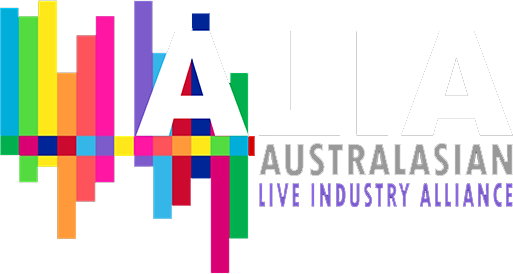Sufjan Stevens was one of the main performers at the Sydney Festival this year. Stevens played sold out houses, two at the Sydney Opera House and one at the State Theatre Sydney, followed by a tour of Australia and New Zealand.
It’s difficult to explain a Sufjan Stevens show but reviewer Jimmy Bollard makes a brave attempt on Adelaide’s Rip It Up web site: ‘Completing the madness is the visual display on stage. In keeping with the surrealism of his recent music, Sufjan and his band are decked out in fluorescent costume. Nothing new there. But when coupled with tin foil headdresses, Evel Knievel jumpsuits, flashing collars and cabaret boas, it makes for a pretty eclectic wardrobe. And this is just the tip of the iceberg. The real visual stimulant comes from all the projections and lighting displays. There are two screens onto which images are projected – one behind the band and a thin veil that periodically drops in front of them – and on these are an array of optical splendours. The animated works of Royal Robertson come to life on Get Real, get Right; an ever-changing volcanic cross-section lights up on Vesuvius as the band appear to be burning up right there onstage; unnerving, oscillating polygons constantly reappear; while during set closer Impossible Soul, a giant crystal cardboard cut-out descends from the ceiling. Then a magical thing happens towards the end of this song when hundreds of multi-coloured balloons disperse throughout the theatre. This isn’t just a gig, it’s not just a concert, it’s a production. Sufjan is living proof that music affects you on more levels than the superficial, it appeals to more senses than just the aural.”
With an eclectic mix of folk and pop music with a touch of rock opera, Stevens employed the talents of local lighting designer Paul Collison to light the two hour musical journey. With an ever changing lighting system from venue to venue and very tight time schedule, it made no sense to try out a new lighting console. However sense is something Mr Collison rarely has.
“I wanted to use the same control surface on all the shows,” he said. “I didn’t want to flit between different operating systems so the only way to prevent that is to tour the console and I opted for the Martin M1 console.”
Paul had a corflute road case made for the board by Timon Klein Industries; a light but rugged road case meant the console in the case was only 24kg.
“I had used the M1 previously and was impressed by its abilities and features,” remarked Paul. “I had thought this was going to be an easy tour to try a new surface on. How wrong I was. Each song had anywhere between twenty and thirty cues. It really was a musical journey and the lighting needed to reflect this.
“I was most impressed by a feature I hadn’t put much thought in to. I knew I would be swapping fixtures in and out during the tour. LED wash lamps on one show, old Studio Colors on another. The cloning feature made life so, so easy for me. I was amazed when I turned up to the second show to find I was able to clone LED washes to arc wash lamps with just a tweak of a few colours here and there.
Paul discovered that when it came to changing profile fixtures the same thing occurred and all he needed to do was change gobo palettes and he was ready to go.
“It saved me hours and hours and hours of re-programming each day,” he said. “It gave me a chance to really refine the show each day.”
The show was followed by rave reviews around the country. Stevens came in to the public eye as a folk singer usually performing with only a banjo and acoustic guitar and many in the audience had not seen this side of the performer.
“The music really leant itself to lots of cues to accent the musical nuances,” explained Paul. “Each song had its own cue-stack for all the moving light cues. I ran the key lights manually using the group inhibitive masters to guide the overall level while still being able to control individual keys using the ample amount of faders on the surface.”
But would Paul use the M1 for something like this again? “The M1 is a board with mature software. I was really impressed with how quickly I could adapt my workflow from other operating systems to the M1’s. I’ll be definitely using the M1 for more shows in the future.”























































You must be logged in to post a comment Login